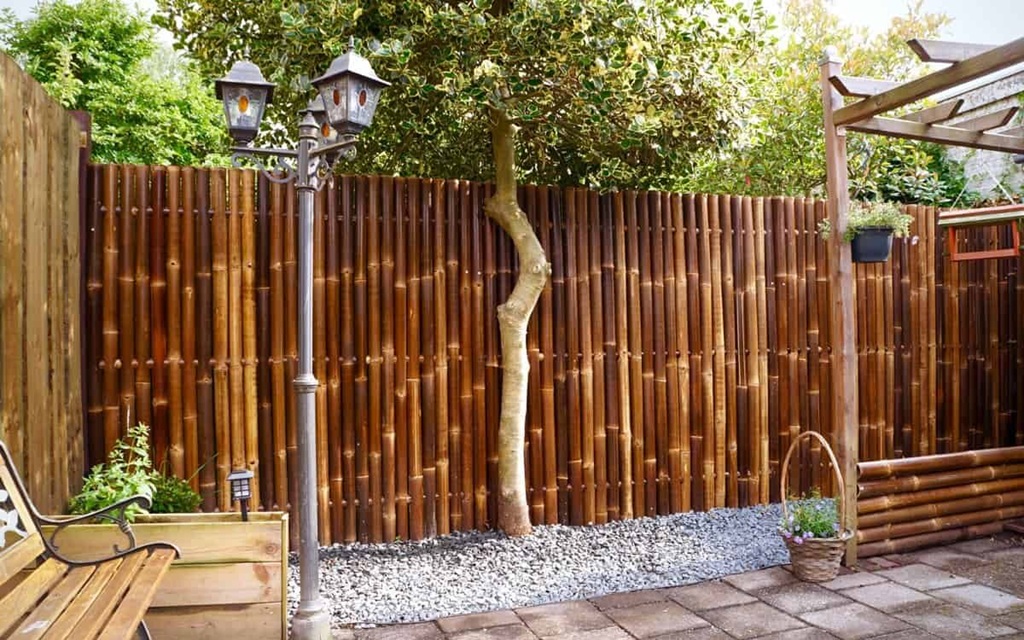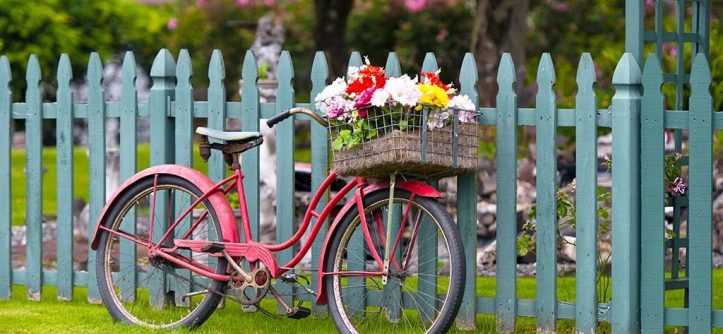In an era where sustainability is paramount, extending eco-conscious practices to our gardens is more crucial than ever. While traditional fencing solutions often rely on treated lumber and resource-intensive materials, a growing movement embraces eco-friendly alternatives. These options not only minimize environmental impact but also add a unique, natural aesthetic to your outdoor space. This article delves into a comprehensive guide to eco-friendly garden fencing, exploring sustainable materials, innovative designs, and practical tips to create a beautiful and responsible boundary for your green haven.
The Importance of Eco-Friendly Fencing:
The ecological footprint of traditional fencing can be significant. Pressure-treated wood, while durable, often involves chemical preservatives that can leach into the soil. Manufacturing processes for materials like vinyl can also contribute to pollution. Opting for eco-friendly fencing aligns with principles of sustainable living, reducing waste, conserving resources, and fostering
Bamboo:
-
- Bamboo is a rapidly renewable resource known for its strength and flexibility. Its fast growth rate makes it a highly sustainable choice. Bamboo fencing can create a natural, tropical ambiance in your garden. It’s important to be mindful of sourcing bamboo from responsibly managed plantations.
- From individual poles tied together to woven bamboo panels, there’s enormous variability. Bamboo can be used to construct solid walls, open screening and much more.
- When choosing bamboo, ensure it is treated to prevent rot and insect infestations.
Reclaimed Wood:
-
- Utilizing reclaimed wood breathes new life into discarded materials, reducing deforestation. Pallets, old barn wood, and salvaged lumber can be transformed into rustic and charming fences.
- The use of reclaimed wood has the unique ability to produce exceptionally individualistic results, given that each piece of wood will carry with it its own history.
- Careful inspection of reclaimed wood is important, ensuring that it is free from harmful chemicals or excessive rot.
Woven Willow or Hazel:
-
- These flexible materials are ideal for creating natural, handcrafted fences. Willow and hazel fences offer a rustic charm and can be woven into various designs.
- This traditional practice is often locally sourced and can be remarkably durable. It creates wonderful naturalistic textures, that fit superbly into natural landscapes.
- This kind of fencing is highly suited to irregular garden shapes, due to the flexibility of the materials.
Living Fences (Hedges):
-
- Living fences are the epitome of eco-friendly boundaries. Hedges made from shrubs, trees, or flowering plants provide habitat for wildlife, improve air quality, and add natural beauty to your garden.
- Various plants, such as privet, boxwood, and hawthorn, are popular choices. The species chosen should be chosen according to your climate, and the desired height and density of the hedge.
- Living fences can be a long-term project that requires regular maintenance but provides excellent environmental benefits.
Recycled Plastic Composites:
-
- Modern materials utilizing recycled plastics and wood fibers provide a strong and durable fencing option. These materials are highly resistant to rot, insects, and weathering.
- Choosing composite fencing created from a high percentage of recycled material can be a highly responsible action.
- Although plastic is involved, these materials can remove large volumes of plastic from the waste stream.
Designing Your Eco-Friendly Fence:

- Consider Your Garden Style:
- The fence should complement the overall aesthetic of your garden. A rustic garden may suit a woven willow fence, while a modern garden may benefit from bamboo or recycled composite.
- Functionality:
- Determine the primary purpose of your fence. Is it for privacy, security, or simply to define a boundary? This will influence the height, density, and material selection.
- Local Climate and Conditions:
- Choose materials that are well-suited to your local climate. Some materials may be more susceptible to rot in humid environments, while others may be prone to cracking in extreme temperatures.
- Vertical Gardening Integration:
- Combine a fence with vertical gardens. This adds extra planting space and can be useful in smaller gardens. This is useful for growing vegetables, herbs, and flowers.
- Wildlife Considerations:
- Adding gaps to the base of your fence can allow small wildlife to pass through. Integrating bird boxes, or other wildlife-supporting actions, into the fence structure adds to the environmental friendliness.
Related: Understanding The Benefits of Custom Fencing
Installation and Maintenance:
- Proper Installation:
- Ensure the fence is installed correctly to maximize its lifespan and stability. Proper post spacing, anchoring, and material handling are essential.
- Regular Maintenance:
- Eco-friendly fences, like any other, require maintenance. Inspect for damage, rot, or insect infestations regularly. Trim hedges and treat wood as needed to prolong the life of your fence.
- Sustainable Treatments:
- Opt for eco-friendly treatments and sealants to protect wood from weathering. Natural oils and non-toxic preservatives are available alternatives.
People Also Ask (FAQs):
- Q: What is the most sustainable fencing material?
- A: Living fences (hedges) and reclaimed wood are generally considered the most sustainable options, as they minimize resource consumption and waste. Bamboo is also highly sustainable due to its rapid growth.
- Q: How can I make my existing fence more eco-friendly?
- A: You can add vertical gardens, integrate wildlife habitats, and use eco-friendly treatments and sealants. If your fence is a wooden fence, using eco friendly stains is an easy action to take.
- Q: Are bamboo fences durable?
- A: Yes, bamboo fences can be durable if properly treated and maintained. It is crucial to ensure that the bamboo is treated to prevent rot and insect infestations.
- Q: How long do living fences take to establish?
- A: The establishment time varies depending on the plant species, but generally, it can take several years for a hedge to reach its full size and density.
- Q: Are reclaimed wood fences safe?
- A: Yes, but it’s essential to inspect the wood for harmful chemicals or rot before use.
- Q: How do I maintain a woven willow fence?
- A: Willow fences may require occasional repairs and may need to be replaced after several years. Regular inspections are necessary.
Related: What to Consider Before Hiring a Fencing Contractor
Conclusion:
Creating an eco-friendly garden fence is a rewarding endeavor that benefits both your garden and the environment. By choosing sustainable materials, thoughtful designs, and responsible maintenance practices, you can create a beautiful and functional boundary that reflects your commitment to a greener future. Whether you opt for the natural charm of woven willow, the rapid renewability of bamboo, or the vibrant life of a living hedge, your eco-friendly fence will be a testament to sustainable living. Through careful planning, sustainable practice and informed decisions, your fence can be more than just a barrier, it can become a valuable environmental asset.


